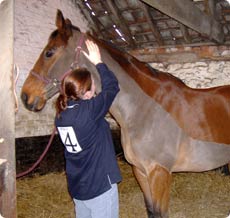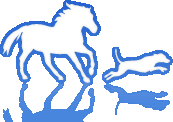McTimoney Therapy
The McTimoney Treatment Process
1. Case History
A thorough case history is taken, including:
- Veterinary diagnosis (where applicable)
- Current or past injuries, illnesses and operations
- Any changes in behaviour, performance or temperament
- Management information, such as exercise regime
- Clarification that veterinary permission has been obtained for the treatment (this is usually the responsibility of the owner, and the owner will be required to sign a statement to this effect)
2. Static Assesment
The animal will be assessed for:
- Conformational traits / abnormalities which may cause problems in certain areas
- Symmetry of muscle development
- Signs of current pain or inflammation
- Signs of recent injury
3. Gait Analysis
The animal will be assessed at walk, trot, on a circle and in rein back. Lameness or any other symptom indicating recent injury will be referred back to the veterinary surgeon for further investigation (this excludes cases where lame animals are referred for treatment by the animal’s vet).
4. Palpation
The spine, pelvis and any other relevant joints are analysed to find any misalignments in the joints or spasm in the surrounding muscles.
5. Report of Findings to Handler/Owner
6. Treatment
The problem areas are treated using specific high speed, low force adjustments to gently correct misalignment and reduce muscle spasm.
7. Aftercare Advice
This usually involves rest and/or limited exercise for a few days, and may include exercise and stretching regimes. The aftercare advice should be followed by the animalís owner, as it will maximise the effects of the treatment.
Some animals may require several treatments to fully normalise their musculoskeletal system.
Liz may also use massage and stretching techniques as appropriate for your animal.

Weight bearing and modern competition put strain upon a horse's skeletal structure...
From cats to cattle, rabbits to sheep, McTimoney therapy can benefit all animals...








